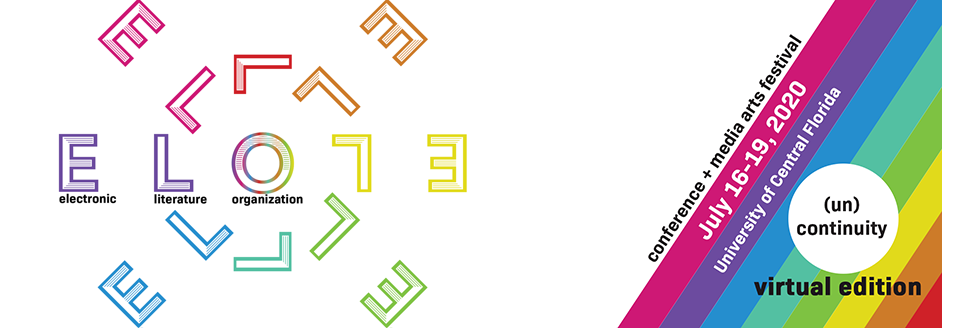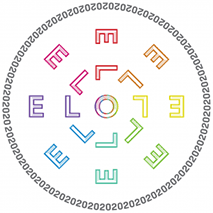Proposal Title
Performance of "the fabric of everyday life"
Submission Type
Performance
Abstract
Malloy's generative poem "the fabric of everyday life" explores both the creative possibilities and the “big brother” overtones of ubicomp technologies. In this work, the author's poet/artist/coder’s generative authoring system brings phrases to the forefront at the will of the computer -- allowing, if the reader generates several versions, multiple interpretations. Within this framework, both the unpredictable juxtaposition of wired and unwired objects and the aleatory questions (such as "where is the sound of the modem?") position the "the fabric of everyday life" in an era of changing technologies. The title is a phrase from Mark Weiser’s classic paper, "The Computer for the 21st Century" (Scientific American, 265:3, September 1991. pp. 94-104).
Situating the audience in the unpredictable environment of "the fabric of everyday Life", the ELO2020 soundwork -- https://narrabase.net/iot/fabricsound.html -- is based on the line from the poem that reads: "the windchimes play sonorously in different keys". Spoken lines from the poem are integrated into the code in such a way that only sound from the variables that the code generates is heard. In the process, like the windchimes it simulates, a fleeting aleatoric soundwork invites playing and replaying. Because some of the variables do not contain sound, once in a while the windchimes are silent or play only briefly.
Performance of "the fabric of everyday life"
Malloy's generative poem "the fabric of everyday life" explores both the creative possibilities and the “big brother” overtones of ubicomp technologies. In this work, the author's poet/artist/coder’s generative authoring system brings phrases to the forefront at the will of the computer -- allowing, if the reader generates several versions, multiple interpretations. Within this framework, both the unpredictable juxtaposition of wired and unwired objects and the aleatory questions (such as "where is the sound of the modem?") position the "the fabric of everyday life" in an era of changing technologies. The title is a phrase from Mark Weiser’s classic paper, "The Computer for the 21st Century" (Scientific American, 265:3, September 1991. pp. 94-104).
Situating the audience in the unpredictable environment of "the fabric of everyday Life", the ELO2020 soundwork -- https://narrabase.net/iot/fabricsound.html -- is based on the line from the poem that reads: "the windchimes play sonorously in different keys". Spoken lines from the poem are integrated into the code in such a way that only sound from the variables that the code generates is heard. In the process, like the windchimes it simulates, a fleeting aleatoric soundwork invites playing and replaying. Because some of the variables do not contain sound, once in a while the windchimes are silent or play only briefly.




Bio
A poet at the conjunction of hypernarrative, generative literature, and social media narrative, Judy Malloy followed a vision that began with experimental artist books. In 1986, she wrote/programmed the groundbreaking hyperfiction Uncle Roger. Subsequently she created a series of hypernarratives -- from the classic its name was Penelope to Arriving Simultaneously, shortlisted for the 2018 Coover prize. Her work has been exhibited and published internationally, and she has taught as a distinguished fellow at Princeton University, as a Digital Studies Fellow at Rutgers Camden, and currently in the Art and Technology Studies Department, as a lecturer at the School of the Art Institute of Chicago. With early work as an information programmer at Ball Aerospace, her research/practice also includes work with virtual communities at Xerox PARC; Content Coordinator for Arts Wire, a program of the New York Foundation for the Arts; and Editor of Social Media Archeology and Poetics (MIT Press, 2016).